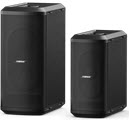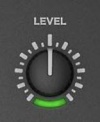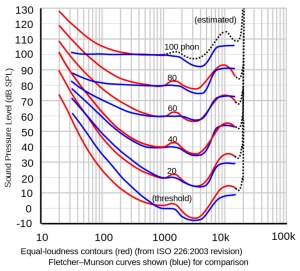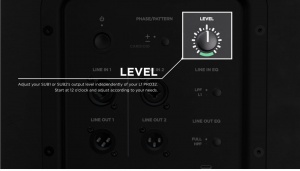Difference between revisions of "Template:Sub1/Sub2 Level Control"
m |
m |
||
| (2 intermediate revisions by the same user not shown) | |||
| Line 1: | Line 1: | ||
| + | {{Sub icon}} | ||
[[File:Sub1 Sub2 Level Control.jpg|100px|right]] | [[File:Sub1 Sub2 Level Control.jpg|100px|right]] | ||
;Question: Why have a LEVEL control on the Bose Sub1/Sub2? This can also apply to other subwoofers as well. | ;Question: Why have a LEVEL control on the Bose Sub1/Sub2? This can also apply to other subwoofers as well. | ||
| Line 30: | Line 31: | ||
[[Category:L1 Pro]] | [[Category:L1 Pro]] | ||
[[Category:Equal Loudness]] | [[Category:Equal Loudness]] | ||
| + | [[Category:Sub]] | ||
Latest revision as of 20:08, 19 May 2021
- Question
- Why have a LEVEL control on the Bose Sub1/Sub2? This can also apply to other subwoofers as well.
- Answer
At lower volume, the Equal Loudness contour[1] shows that humans don't perceive bass as well as mid-highs. You can compensate for this by turning up the Sub1/Sub2 LEVEL Control.
Other times bass may seem excessive
- At higher volumes
- Due to boundary effects (proximity to walls and corners)
- On a resonant stage
You can compensate for this by turning down the Sub1/Sub2 LEVEL Control.
Recommended Settings
- Set the Sub1/Sub2 Level control at 12:00 o'clock[2].
- Raise/lower the volume of the L1 Pro32 as required.
- Adjust the Sub1/Sub2 Level control to balance bass level with the mid-high level from the L1 Pro 32.



